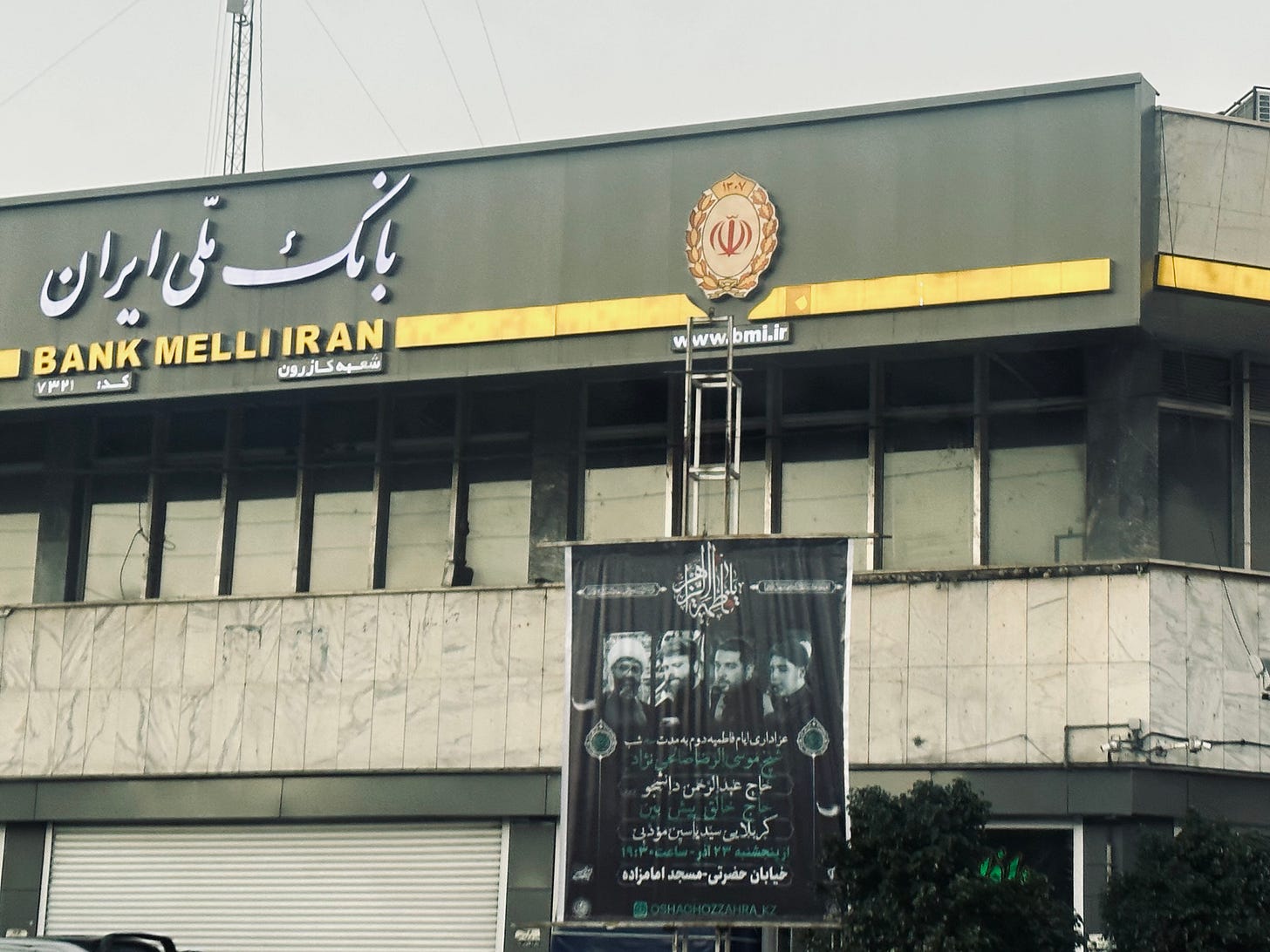Ayandeh Bank, once a major private financial institution in Iran, has been dissolved and merged into Bank Melli Iran after years of mounting financial distress and regulatory intervention. On October 23, 2025 (1 Aban 1404), the Central Bank of Iran (CBI) confirmed the merger, marking one of the most significant events in the country’s modern banking history.

Ayandeh Bank was established in 2012 through the merger of Tat Bank, Salehin Credit Institution, and Ati Credit Institution. Despite expanding to over 270 branches, the bank suffered from poor capitalization, weak supervision, and risky investment practices. Its most notable and damaging venture was the Iran Mall project, a massive commercial complex in northwest Tehran valued at 335 trillion rials (around USD 5.5 billion). This investment drained Ayandeh’s resources and liquidity, as nearly all construction costs were financed by the bank. By 2025, Iran Mall had become the largest corporate debtor in Iran, owing approximately 100 trillion rials to Ayandeh Bank.
Financial reports revealed catastrophic losses: 502 trillion rials in accumulated losses—314 times the bank’s capital—plus 99 trillion rials in net losses during the first nine months of 2024, 717 trillion rials in interbank debt, and 300 trillion rials in overdrafts from the Central Bank. The bank’s capital adequacy ratio stood at −295%, far below international standards. Under Article 141 of Iran’s Commercial Code, Ayandeh was legally insolvent. Repeated managerial changes since 2020 failed to resolve the crisis, and related-party lending continued, with over 124 trillion rials in loans extended to affiliated companies in 2023 alone.
The crisis reached a climax when Chief Justice Gholam-Hossein Mohseni-Ejei publicly warned CBI Governor Mohammad Reza Farzin that failure to act on Ayandeh’s insolvency could result in prosecution. The CBI promptly initiated dissolution and merger proceedings with Bank Melli Iran. The move reportedly surprised Ayandeh’s executives, as its CEO had just published a letter on the CODAL disclosure system proposing a capital increase, claiming he was unaware of the merger. The judiciary quickly endorsed the CBI’s decision.
Following the official decree, all Ayandeh Bank branches were rebranded under Bank Melli’s name. All deposits, loans, and reserves were transferred, and the Deposit Insurance Fund guaranteed customers’ rights in full. Banking services continued without interruption, ensuring depositors retained full access to their funds. Bank Melli, the nation’s largest and most trusted state-owned bank, was selected specifically to protect public confidence and absorb Ayandeh’s estimated 300 trillion rials in deposits. Although Bank Melli itself carries financial challenges—with 95 trillion rials in capital and 70 trillion rials in accumulated losses—the CBI maintains that the merger will strengthen systemic stability.
Economists view Ayandeh’s collapse as evidence of deeper structural weaknesses in Iran’s financial system—political interference, insufficient regulatory independence, and misuse of depositors’ funds for speculative projects. Experts warn that without serious banking reforms and greater transparency, similar crises could recur. The merger continues a long pattern of state-led consolidations, from the post-1979 nationalizations to the 2019–2022 merger of military-affiliated banks into Bank Sepah. While such actions preserve short-term stability, they often transfer private losses to the public sector.
The downfall of Ayandeh Bank stands as both a warning and a turning point. It demonstrates how poor governance, related-party lending, and regulatory weakness can bring even a large private bank to collapse. The merger with Bank Melli Iran has prevented panic and protected depositors, but it adds pressure to the state banking system. Its success will depend on the government’s commitment to financial reform, transparency, and independent oversight. The end of Ayandeh Bank is thus a defining moment for Iran’s banking sector—a decisive yet necessary step to preserve financial stability and potentially restore public trust.
